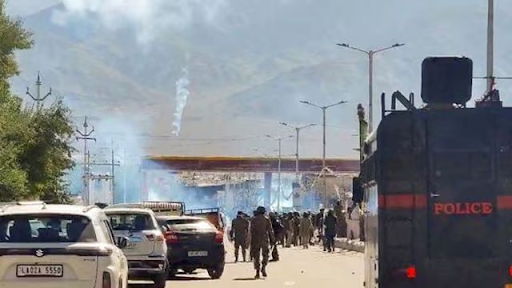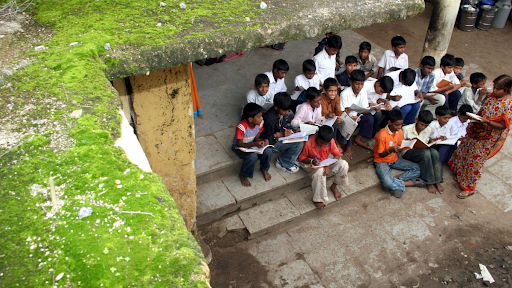Description
.png)
Copyright infringement not intended
Context: The Commissioner of Railway Safety for the south-eastern circle, a government body under the Ministry of Civil Aviation, is leading the investigation into the horrific train accident that occurred in Odisha. The accident, which involved three trains and claimed 275 lives, was the worst rail disaster in India since 1995.
Details
Commission of Railway Safety (CRS)
- The Commission of Railway Safety (CRS) is responsible for ensuring the safety of rail travel and operations in India, as per the Railways Act, 1989.
- It also performs other statutory functions such as inspection, investigation, and advisory.
- One of its primary duties is to probe serious train accidents and determine their causes and consequences.
- The CRS is not under the control of the Ministry of Railways or the Railway Board, to avoid any conflict of interest or undue influence from the railway establishment.
- The CRS reports to the Ministry of Civil Aviation, which has no direct involvement in railway matters. This arrangement dates back to the colonial era when the CRS was established as an independent authority to oversee railway safety.
- Its head office is in the North-East Railway Compound in Lucknow.
Working Structure
- The Commission is headed by a Chief Commissioner of Railway Safety (CCRS), who also acts as Principal Technical Advisor to the Central Government in all matters pertaining to railway safety.
- There are 9 Commissioners of Railway Safety (CRS), each one exercising jurisdiction over one or more of the 19 Zonal Railways. In addition, Metro Railway (Kolkata), DMRC (Delhi), MRTS (Chennai) and Konkan Railway also fall under their jurisdiction.
.jpeg)
Railway Safety Background
Consulting engineers
- The history of railways in India goes back to the early 1800s when the first rail lines were built and operated by private companies, such as the East India Railway Company and the Great Indian Peninsula Railway Company.
- These companies had contracts with the British Indian government, which appointed ‘consulting engineers’ to supervise and regulate the railway network and operations in India.
- The consulting engineers had to inspect the railway tracks, bridges, tunnels, locomotives, rolling stock, stations, signalling systems, and other aspects of railway infrastructure and services.
- Their main objective was to ensure that the railways were efficient, economical, and safe for passengers and goods.
Government inspectors
- In the late 1800s, the British Indian government started to take over the construction and ownership of railways in India from private companies. The consulting engineers then became ‘government inspectors’ and their role was given statutory recognition in 1883 by an amendment to the Indian Railway Act.
Railway Board
- In 1905, a new body called the Railway Board was established by the Indian Railway Board Act, 1905.
- The Railway Board consisted of a chairman and four members who were appointed by the government.
- The Railway Inspectorate was placed under the administrative control of the Railway Board.
- The Railway Board had the powers and functions of the government under various sections of the Railway Act and was authorised to make rules and regulations for railway operations in India. This effectively made the Railway Board the safety controlling authority for railways in India.
Federal Railway Authority
- The Government of India Act 1935 was a constitutional document that defined the structure and powers of the central and provincial governments in British India. One of its provisions was that the safety of railway operations in India should be overseen by an independent authority, separate from the Railway Board, which was the federal railway authority.
- This authority would have the power to inspect the railways, enforce safety standards, and conduct inquiries into railway accidents. This provision aimed to ensure that railway safety was not compromised by the commercial or political interests of the Railway Board, which was also responsible for managing and operating the railways in India.
- However, this provision was not put into effect due to the outbreak of the Second World War in 1939, which disrupted the political and administrative reforms in India. As a result, the Railway Inspectorate, which was the department that performed the safety supervision function, continued to function under the control and direction of the Railway Board.
A.H.L. Mount committee
- In 1939, a committee was appointed by the Government of India to review the railway safety situation in India and suggest improvements. The committee was headed by A.H.L. Mount, who was the chief inspecting officer of the British Railways and had extensive experience in railway safety matters.
- The committee submitted its report in 1940, in which it strongly recommended that the Railway Inspectorate should be separated from the Railway Board and made an independent authority. The committee argued that this would eliminate the anomaly and conflict of interest of the Railway Board being both the inspecting as well as the executive authority for railway operations in India.
Transfer of Railway Inspectorate from Railway Board’s control
- The Central Legislature passed a resolution in 1940, endorsing the idea and principle of separating the Railway Inspectorate from the Railway Board, which was responsible for the management and operation of the railways in India.
- The Legislature also recommended that the senior government inspectors of the railways, who were in charge of ensuring the safety and efficiency of the railway system, should be placed under the administrative control of a different authority under the government, independent of the Railway Board.
- Consequently, in May 1941, the Railway Inspectorate was transferred from the Railway Board to the Department of Posts and Air, which was a central ministry dealing with postal and air services.
Since then, the Inspectorate, which was re-designated as the Commission of Railway Safety (CRS) in 1961, has been under the control of the central ministry exercising control over civil aviation in India. The CRS is responsible for conducting statutory inquiries into railway accidents and advising the government on matters pertaining to railway safety.
Must Read Articles:
Modernization of Indian Railways: https://www.iasgyan.in/daily-current-affairs/modernisation-of-indian-railways
|
PRACTICE QUESTION
Q. Consider the following statements about the Commission of Railway Safety (CRS).
1. The CRS is subordinate to the Ministry of Railways.
2. There are 19 Commissioners of Railway Safety (CRS) in India.
Which of the following statements is/are correct?
A) 1 only
B) 2 only
C) Both 1 and 2
D) Neither 1 nor 2
Answer: D
Explanation
Statement 1 is incorrect: The CRS is subordinate to the Ministry of Civil Aviation and is the rail safety authority in India as directed by The Railways Act, 1989.
Statement 2 is incorrect: There are nine Commissioners of Railway Safety (CRS), each one exercising jurisdiction over one or more of the 19 Zonal Railways. The Commission is headed by a Chief Commissioner of Railway Safety (CCRS), at Lucknow.
|

https://indianexpress.com/article/explained/everyday-explainers/crs-railway-safety-odisha-crash-investigation-explained-8648133/




.png)
.png)





